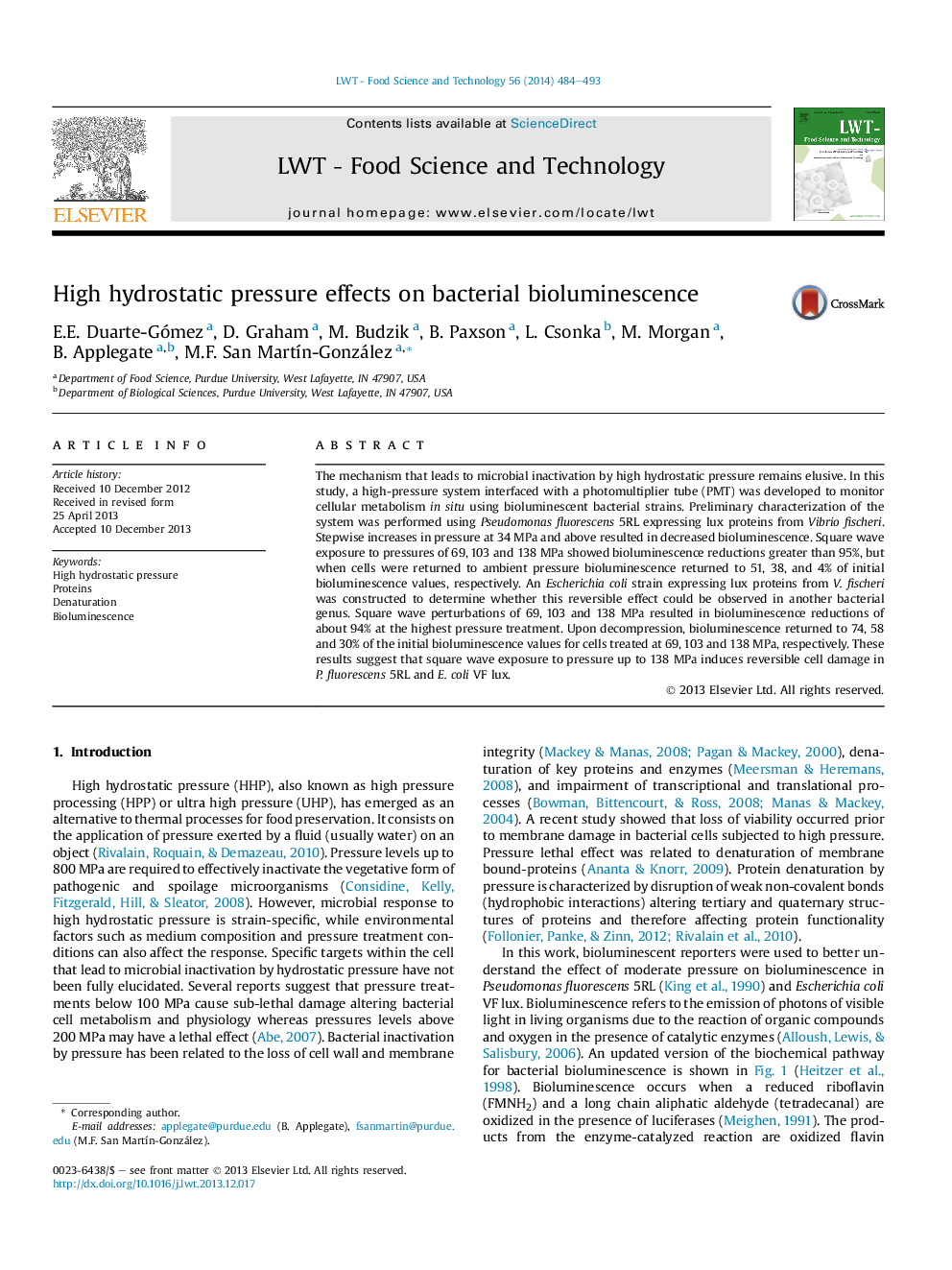| کد مقاله | کد نشریه | سال انتشار | مقاله انگلیسی | نسخه تمام متن |
|---|---|---|---|---|
| 6404373 | 1330901 | 2014 | 10 صفحه PDF | دانلود رایگان |
- Square wave pressure treatments up to 138Â MPa promote reversible denaturation of lux proteins.
- Lux proteins denaturation depends on the applied pressure levels.
- Bioluminescence recovery decreased with increasing pressure levels.
- Loss of bacterial viability by pressure treatments is strain specific.
The mechanism that leads to microbial inactivation by high hydrostatic pressure remains elusive. In this study, a high-pressure system interfaced with a photomultiplier tube (PMT) was developed to monitor cellular metabolism in situ using bioluminescent bacterial strains. Preliminary characterization of the system was performed using Pseudomonas fluorescens 5RL expressing lux proteins from Vibrio fischeri. Stepwise increases in pressure at 34 MPa and above resulted in decreased bioluminescence. Square wave exposure to pressures of 69, 103 and 138 MPa showed bioluminescence reductions greater than 95%, but when cells were returned to ambient pressure bioluminescence returned to 51, 38, and 4% of initial bioluminescence values, respectively. An Escherichia coli strain expressing lux proteins from V. fischeri was constructed to determine whether this reversible effect could be observed in another bacterial genus. Square wave perturbations of 69, 103 and 138 MPa resulted in bioluminescence reductions of about 94% at the highest pressure treatment. Upon decompression, bioluminescence returned to 74, 58 and 30% of the initial bioluminescence values for cells treated at 69, 103 and 138 MPa, respectively. These results suggest that square wave exposure to pressure up to 138 MPa induces reversible cell damage in P. fluorescens 5RL and E. coli VF lux.
Journal: LWT - Food Science and Technology - Volume 56, Issue 2, May 2014, Pages 484-493
